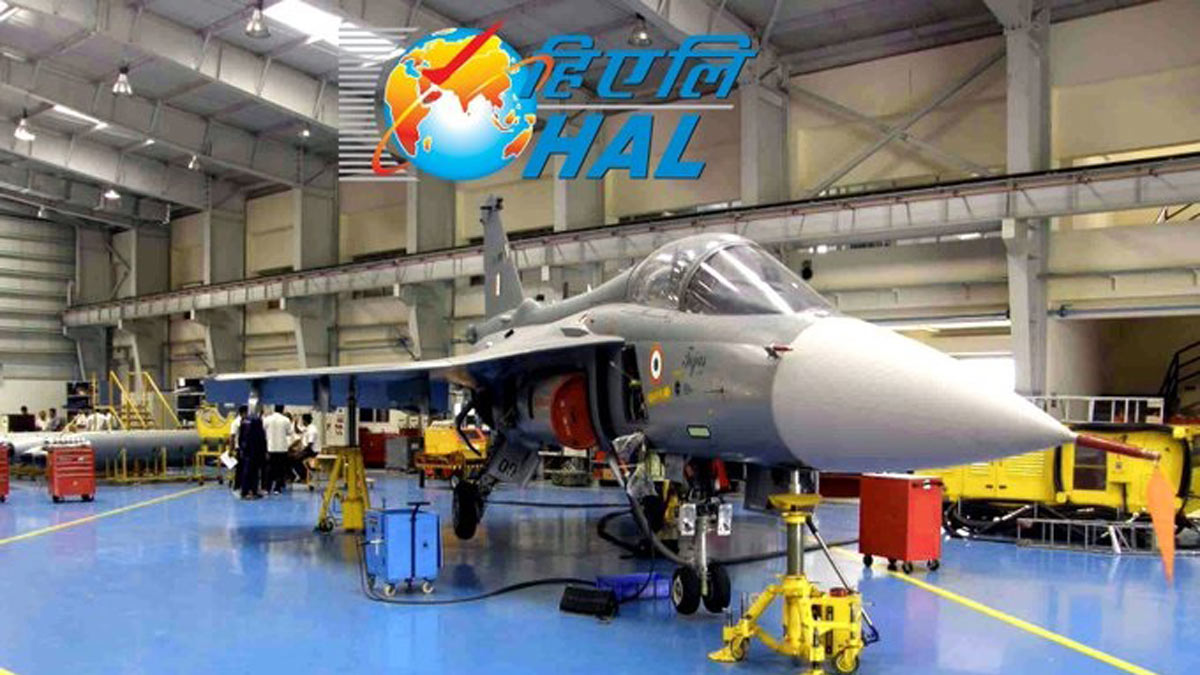How HAL-AMCA tussle between Karnataka and AP extends to broader issue of Defence Industrial Corridors

A tug-of-war has started between Karnataka and Andhra Pradesh over Hindustan Aeronautics Limited (HAL), triggered by AP Chief Minister N. Chandrababu Naidu’s push to expand HAL’s operations in his state. This proposal has been met with fierce opposition from Karnataka leaders, who see HAL as a cornerstone of their state’s identity. The dispute centres on HAL’s manufacturing units for the newly approved Advanced Medium Combat Aircraft (AMCA) and the Tejas Light Combat Aircraft project, intertwining economic aspirations, regional pride, and political manoeuvring. Statements from Naidu, Karnataka Deputy Chief Minister D.K. Shivakumar, Mysore MP Yaduveer Krishnadatta Chamaraja Wadiyar, underscore the high stakes, while the AMCA’s execution model adds further complexity.
Experts point out that Naidu aims to transform Andhra Pradesh into a defence manufacturing hub, offering 10,000 acres in Lepakshi, just 70-100km from Bengaluru, for new HAL facilities. An hour from Bengaluru airport, Lepakshi could tap into the existing aerospace ecosystem while generating jobs and economic growth. However, at a recent party meeting, Naidu clarified that he never suggested shifting HAL from Bengaluru and that his focus is on creating new hubs and not taking projects away. He proposed Lepakshi for aircraft manufacturing and Visakhapatnam for naval projects, citing Andhra’s vast land availability to address Bengaluru’s spatial limitations.
However, Karnataka Deputy CM Shivakumar described HAL as Karnataka’s pride, asserting that they would not let decades of progress be moved elsewhere. He even went on to criticise Karnataka MPs for their silence and credited Jawaharlal Nehru for HAL’s establishment, and emphasised Bengaluru’s skilled workforce and technical expertise. With HAL facilities already in Bengaluru and Tumakuru, Karnataka argues its industrial heritage and available land make it the natural home for HAL’s operations. For Shivakumar, this is a fight to preserve Karnataka’s economic and cultural legacy.
Mysuru MP and royal scion from the Wadiyar dynasty, Yaduveer Wadiyar challenged Shivakumar’s historical narrative, noting that HAL was founded in 1940 by Mysore Maharaja Jaya Chamaraja Wadiyar and industrialist Walchand Hirachand and not Nehru. In a post on X, Yaduveer had called any relocation of HAL’s operations premature and disrespectful and urged the Union government to prioritise Karnataka. He highlighted Bengaluru’s robust aerospace ecosystem as essential for both Tejas and AMCA, while acknowledging Andhra’s ambitions but firmly advocating for Karnataka’s rightful claim.
“Bengaluru’s skilled talent, research institutions, and supply chains make it indispensable for HAL’s operations. Upgrading Karnataka’s facilities could meet HAL’s needs fully, while Andhra’s land could support new, complementary facilities to expand the national aerospace ecosystem without undermining Bengaluru’s role,” defence and space expert Girish Linganna told THE WEEK.
The AMCA project, approved in March 2024 with its execution model finalised on May 27, 2025, by Defence Minister Rajnath Singh, introduces additional layers to the debate. The Rs 15,000 crore project aims to develop five prototypes, with a first flight targeted for 2028 and induction by 2035. While HAL leads the project, the execution model opens production to private firms like Tata, L&T, or Reliance through competitive bidding, with decisions on partners and locations pending until 2026. This uncertainty fuels the rivalry, as both states vie for a role in this prestigious project.
The controversy extends beyond HAL and AMCA to the broader issue of Defence Industrial Corridors, which were established in Uttar Pradesh and Tamil Nadu in 2018 to boost indigenous defence production. These corridors, spanning six nodes in Uttar Pradesh (Agra, Aligarh, Chitrakoot, Jhansi, Kanpur, Lucknow) and five in Tamil Nadu (Chennai, Coimbatore, Hosur, Salem, Tiruchirappalli), were chosen for their strategic locations, industrial ecosystems, and connectivity.
Uttar Pradesh benefits from its large labour force and proximity to defence establishments, attracting Rs 3,700 crore in investments by 2020, including Rs 1,200 crore from HAL. Tamil Nadu leverages its coastal access, four international airports, and power surplus, securing Rs 3,100 crore in investments. These corridors offer plug-and-play facilities, single-window clearances, and tax incentives, fostering MSMEs, generating jobs, and reducing import dependency under the 'Make in India' initiative.
The basis for privileging Uttar Pradesh and Tamil Nadu appears rooted in their infrastructure, political alignment with the Union government at the time, and ability to attract investments. However, Karnataka, contributing 65 per cent to India’s aerospace and defence sector, argues it was overlooked despite its unmatched expertise. Andhra Pradesh’s proximity to Bengaluru, and Naidu being part of NDA alliance, give it an edge in pushing for a third corridor, but Karnataka leaders question why their state, with its proven track record, has been sidelined. Karnataka Industries Minister M.B. Patil has vowed to meet Rajnath Singh to demand a corridor, emphasising merit over political influence.
Experts point out that this dispute is more than a tussle over HAL; it’s a clash of economic visions and regional identities. For Andhra Pradesh, it’s a chance to revive its economy and strengthen Naidu’s political standing within the NDA. For Karnataka, HAL symbolises pride, and the Congress-led government sees any shift as a political setback. Yaduveer’s BJP-backed stance amplifies regional sentiment, rallying support for Karnataka. The Union government, navigating its NDA alliances, faces a delicate balancing act. Favouring Andhra could empower Naidu but risks alienating Karnataka leaders and voters.
“A balanced solution is essential. Bengaluru’s ecosystem – its skilled workforce, research hubs, and supply chains – is critical for HAL and AMCA’s core operations. Andhra’s land and strategic location offer opportunities for expansion. Establishing new HAL units in Andhra for emerging projects, and potentially siting AMCA production there, while preserving Karnataka’s existing HAL facilities, could align with India’s broader defence objectives. The AMCA’s production partner and location remain undecided, but a collaborative model involving HAL and private firms could distribute economic benefits across states,” added Linganna.
The tug-of-war reflects the tension between economic ambitions and regional pride. With the AMCA’s execution model approved but production decisions pending, cooperation must take precedence. HAL and AMCA are national assets; their growth should unite states, not divide them, in the pursuit of a self-reliant India.
Defence